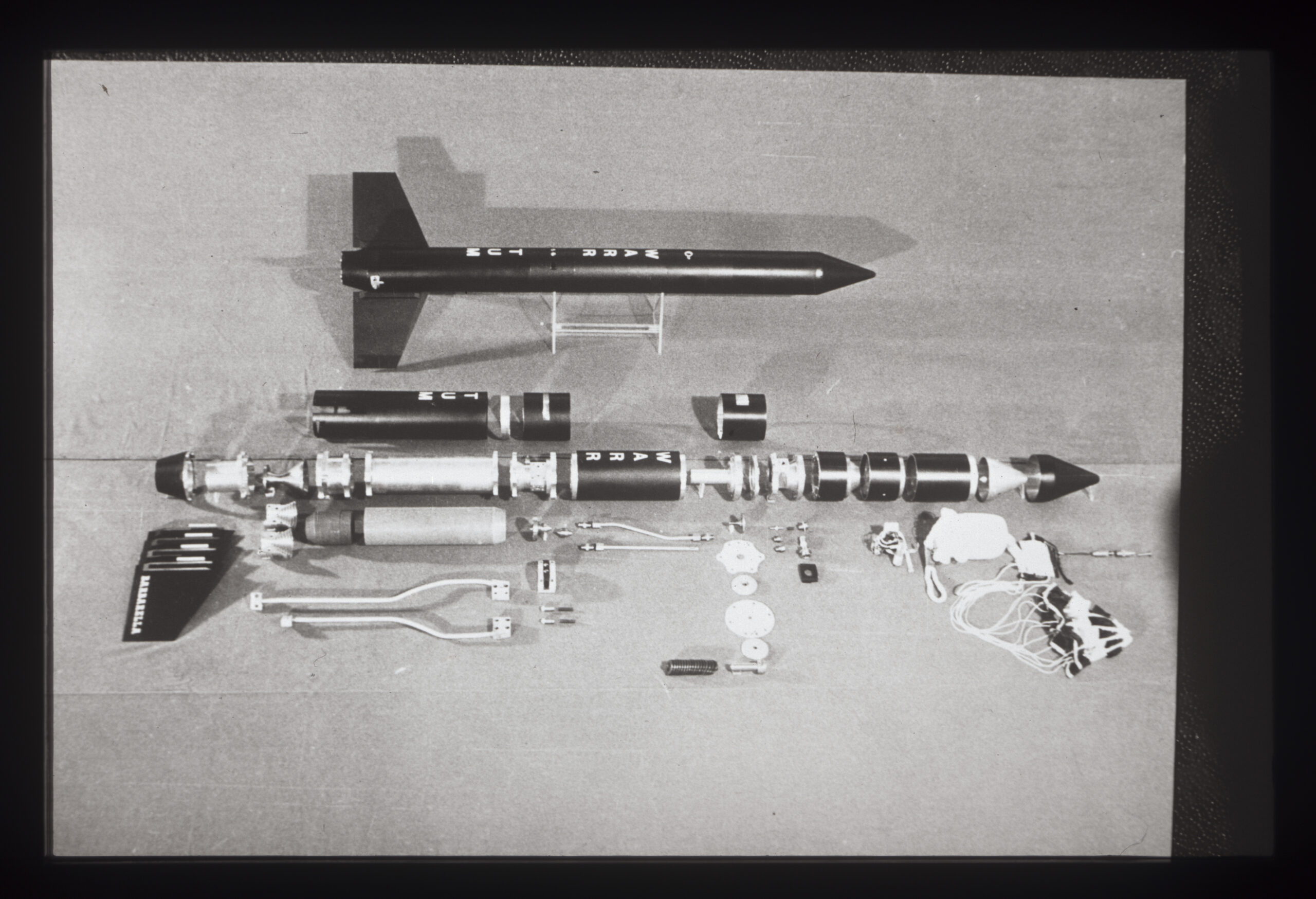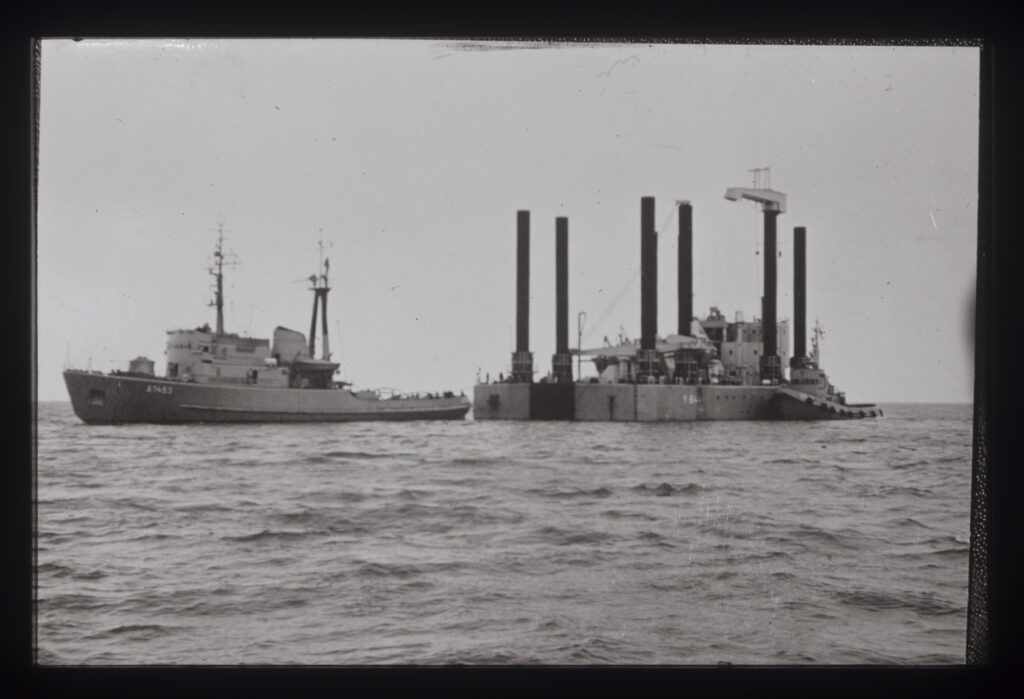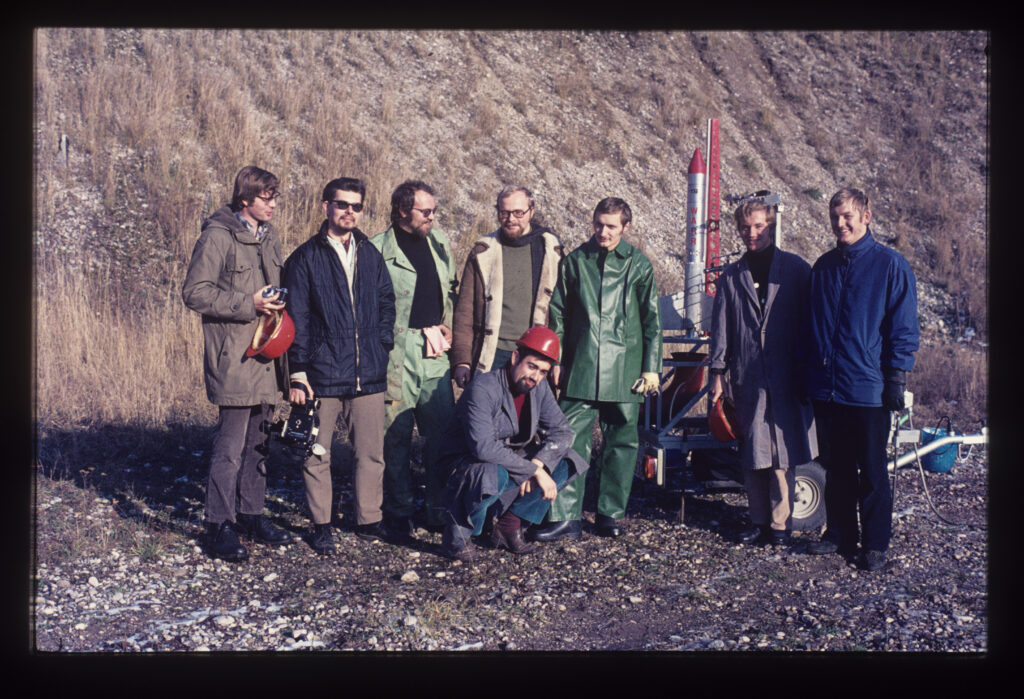50 years ago today, Germany’s first hybrid rocket took off, a milestone in space technologies. Developed by students at the Technical University of Munich, it shaped the future. Professor Robert Schmucker reflects on the past, present and future of this pioneering project and the role of the TUM WARR student group.
On 12. March 1974, the Barbarella rocket was launched from a platform in the Baltic Sea near Eckernförde. Barbarella was the first hybrid rocket to be built in Germany, by students at the Technical University of Munich.
The Barbarella project was coined by Robert Schmucker. In 1962, he and some friends founded what is now WARR (Scientific Workgroup for Rocketry and Spaceflight). Schmucker later completed his doctorate and habilitation and became Professor of Space Technology at the Technical University of Munich in 1981.
To mark the 50th anniversary of the rocket launch, Professor Schmucker sat down with WARR students to reflect on the past, analyse the present and look to the future.
Professor Schmucker, can you explain what a hybrid rocket actually is?
Robert Schmucker: The idea of the hybrid rocket, a combination of a solid fuel with a liquid oxidiser, is relatively old – the first ideas were already around in the 1930s, almost 100 years ago.
Barbarella is a classic hybrid rocket with all the typical elements of this type: Combustion chamber with a solid fuel block, a tank for nitric acid as an oxidiser and a high-pressure gas tank with valves to convey the liquid component into the combustion chamber. It therefore occupies a middle position between the solid fuel and liquid rockets.

What advantages were expected from a hybrid rocket?
Robert Schmucker: In the 1960s, the combination of solid and liquid propellants was expected to result in higher performance compared to solid rockets as well as inherent safety – no risk of explosion – and a significant reduction in complexity compared to liquid rockets. This is why a number of institutions in the East and West have been working intensively on this type of rocket over the years.
The latest rockets such as Ariane 6 or Starship from SpaceX use other propulsion systems. Why has the hybrid rocket not caught on in the industry?
Robert Schmucker: Unfortunately, for physical and technical reasons, apart from the simpler design, it has not yet been possible to realise the hoped-for advantages in practical implementation.
The rocket was launched from the Baltic Sea back then. Why this launch site and could we still launch rockets from there today?
Robert Schmucker: Back then, we needed a test site for the flight. For safety reasons, the area had to be very large, as we wanted to reach as high an altitude as possible – a flat launch on a towel-shaped site like Meppen was out of the question for us. This meant that only the Baltic Sea was a suitable test site.
The potential danger zone from Barbarella was set at around 10 km, as the flight behaviour of the new missile was unknown and every flight direction had to be taken into account. The jack-up platform [mobile platform in the water] was towed from Eckernförde into the Baltic Sea to carry out the tests far from land.

This firing range is sufficient for research rockets the size of Barbarella, but not enough for more powerful, larger rockets. This is why no real space rockets can be launched there, as they do not come down close to the platform and the safety area must be correspondingly large, which rules out the Baltic Sea as a launch area.
What significance did the rocket have for space travel in Germany?
Robert Schmucker: It was the first launch of a research rocket by a group of students that was not powered by a solid rocket motor. This successful rocket test by a group of students at a university in Germany provided a kind of initial spark for other students who were interested in space travel and rockets to work experimentally in this sector and launch rockets themselves.
Can you explain why the Barbarella is worth a visit to the Deutsches Museum?
Robert Schmucker: In the 1970s, a new area dedicated to space travel was created at the Deutsches Museum in Munich. One of the focal points was the detailed presentation of the various types of rockets. The only available example of a hybrid rocket was Barbarella and so the second, fully functional but unfired sample of the flight test from 12 March 1974 found its place in the Deutsches Museum.
However, at the beginning of the 21st century, almost four decades later, the rocket section was significantly downsized as part of the reorganisation of the space department and the hybrid rocket was assigned a niche role, as the expectations associated with this type of propulsion system had not been realised. Accordingly, the Barbarella drawing went into storage and Barbarella itself found a place in a display case. However, this object is still a fine example of what could be achieved by a group of students in those years.
When did the work for the Barbarella actually begin and what role did WARR play in it?
Robert Schmucker: This work had already begun during my school days (together with friends) and was then continued when I started studying at the Technical University of Munich. In addition to small experimental studies focussing on the measurement technology required for this – at that time it was primarily about measuring the performance parameters of a rocket engine and not just the joy of testing – it was also about internal further training in the rocket sector, as there were no corresponding lectures at the university.
Initially we called ourselves AGRR (Arbeitsgemeinschaft für Raketentechnik und Raumfahrt) and it was only later, at Ludwig Bölkow’s request, that we came to be called WARR, the result of a merger and takeover of a THM group of this name, which had not devoted itself to experimental work but only to lectures.
Aircraft such as Barbarella were neither a goal nor of interest, as the complexity of this task far exceeded the modest capabilities at the time. Understanding rocket technology and practical activities were probably the most important considerations at this time.
The situation gradually began to change with the first professorships for the future aerospace specialisation, as WARR was now beginning to attract attention. The decisive upswing at TUM came with the Chair of Aerospace Engineering under Prof Ruppe, who took WARR under his wing. This meant student research projects and dissertations, so that working in the WARR was also worthwhile for students.

You weren’t a professor back then, but a student. To what extent did the rocket influence your future career?
Robert Schmucker: Rockets and space travel have always been and still are my life’s purpose. As a schoolboy aged just over 10, I was already interested in astronomy and then a few years later in rockets, and this subject never let go of me. As a result, I then focussed practically everything in my life on rockets and space travel. I was very lucky: WARR as a group of like-minded people and then Prof Ruppe as my university mentor. Without them, we and I would never have been successful.
What did you imagine in 1972 that the WARR could achieve in 50 years?
Robert Schmucker: With the flight of Barbarella, the goal that had been set since 1969 had been achieved and there were calls to end the WARR. For me, however, in addition to the more theoretical training at the university, the engineering, practical experience gained in the WARR was the decisive aspect for the necessity of student facilities such as the WARR – the independent, autonomous processing of complex engineering topics, parallel to studying.
I prevailed and, with new leadership, new goals were defined and corresponding work started. Thanks to my close relationship with the Chair of Astronautics and Prof Ruppe, I was able to continue to keep an eye on WARR activities and provide university support.
Ruppe was a “rocket man”. That’s why WARR focussed entirely on rockets in the early years, but didn’t lose sight of the wider field of space travel. With the successors of Prof Ruppe and, above all, Prof Walter, WARR became much more broadly based and other topics such as small satellites and finally the Hyperloop came into focus.
With the start-up IsarAerospace, this old WARR dream finally seems to be coming true after 50 years.
How do you see student groups like the WARR today?
Robert Schmucker: Personal initiative is a crucial aspect of personal development. Student groups like the WARR offer an ideal opportunity to do this – to realise something independently without a corset of restrictions and to gain experience in taking care of all the issues that are essential for later success – organisational, financial, resource-related, interpersonal and also media-related. This cannot be done in a normal working day, but requires motivation, commitment and a never-ending endeavour to achieve the goal, even if setbacks and difficulties sometimes give rise to doubts or despair.
WARR and other groups at TUM have done an outstanding job and I am absolutely convinced that we will continue to see great results in the future.
